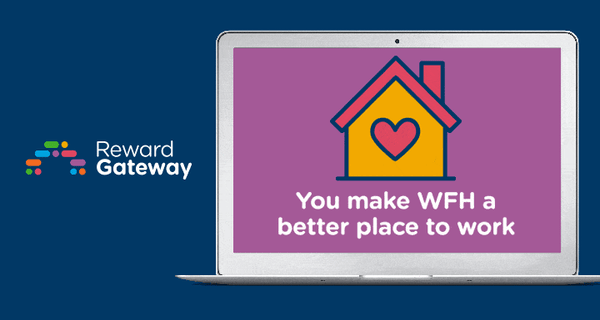One thing that has been a constant throughout the year of 2020 – which, let’s face it, has been overshadowed by the COVID-19 pandemic – is change.
Just when we figure out how to deal with the change from one situation, whether that’s transitioning an entire workforce to work remotely or coping with work-from-home isolation and burnout, the world (or the government) throws us yet another change.
But out of some of the chaos and stressful times, there have been some positive changes that I see staying here for quite a long time. In many of my presentations this year, I’ve addressed these eight points as ones that I see guiding us into 2021 and beyond. Here’s a closer look:
1. There’s been a desire, a need for connection and community
With so much uncertainty and fear in the world, we’ve needed to be connected more than ever, that’s at work or within our community. The creative and great work that companies have done in this space has served as a lifeline to our employees, helping them through the chaos and uncertainty, helping them feel connected and have hope.
C Space demonstrates another example of how to keep your people connected during times of change. When the organisation launched its employee engagement platform, ‘The Spot,’ a main driver was to keep everyone in the loop with two-way communication, especially with employees working remotely.
%20(1).png?width=428&name=c-space-hub%20(1)%20(1).png)
C Space launched various blogs, including customer stories, ‘people happenings’ and company news. Plus, leaders and managers use the internal communications platform to share important updates regarding the business and create opportunities for two-way feedback.
Since launching the platform, C Space has published 204 blog posts, with 10,822 views, 1,032 likes and 244 comments – showing an increase in readership and participation as people crave more information.
2. We're celebrating the good in the world.
Second, we’ve been celebrating the good in the world, recognising the good in others. It’s been lovely to see how people are doing this, whether it’s with claps for the NHS, or by companies creating new and fresh ways to recognise their employees throughout the pandemic, such as the peer-to-peer eCards shown here from various Reward Gateway clients.

3. There’s been a strong focus on inclusion and being human
The topic of ‘being human,’ is all about being your true self, whether we’ve seen that in deeper and more open conversations about diversity, equality and inclusivity, or with leaders breaking out of their shells to show the more human side in an effort to break down barriers with the rest of their employees.
It’s becoming more and more critical for companies to step forward in new ways to make everyone in their workforce feel accepted, feel included, feel appreciated and be able to be their true selves.
4. There’s a new-found belief that flexible working works
I can’t talk about change without mentioning flexible working, which, drumroll please . . . . companies are finding actually works. It’s a shame that it’s taken a crisis to prove this, but the good news is that it’s happening and hopefully more companies will continue to offer flexible or remote working in some way post pandemic and trust their employees who work from home.
A survey conducted by Willis Towers Watson found that employees have managed to remain productive in most organisations despite the challenges posed by COVID-19.
In fact, only 15% of companies surveyed say that remote working has had a material negative impact on their business.
5. Wellbeing is high on everyone's agenda.
Another change which will be no surprise to anyone is a renewed focus on how to support employee wellbeing, which is quickly rising to the top of people teams’ agendas.
Whether it’s physical, mental, financial or social, everyone is dealing with the challenges in these areas in one way or another due to the pandemic.
One area that has certainly jumped to the top of everyone’s list is mental wellbeing, as many people are feeling isolated and lonely during this challenging time. The good news is that companies have really risen to the challenge, doing things to support their workforce’s wellbeing. Here’s an example of what Twinkl Educational Publishing with its 'It’s OK' wellbeing campaign:
Each week, the organisation sent out messages of examples of what it was ‘OK’ to do or feel, such as it's OK to...
- Have more catch-ups
- Talk about work-life balance
- Grab a virtual coffee
- Switch off your notifications at the end of the day
- Ignore devices during a break
The organisation reinforcing what was ‘OK’ for their employees to do helped support the mental wellbeing of their workforce during these challenging times.

6. There’s a need for a quicker and more agile approach
The next change has to do with speed and flexibility, which I’m sure that each and every one of you has felt. With things changing so quickly, it’s put demands on all of us to be able to quickly come up with and implement programs.
While this has been challenging, HR leaders need to give themselves a pat on the back for being able to pivot so quickly to meet the needs of their people, and of their business.
This trend is here to stay. HR professionals will continue to be asked to move quicker and be more flexible, so it’s important for us to make sure that we can do this, looking at how we can streamline our processes and technologies to remove barriers that slow us down.

7. We’ve shown we can do more with less
And it’s not just less time, we’ve also had less money, being asked to deliver more with less of it. But again, many have risen to the occasion, and have made every penny and pound count to connect and support their employees throughout the pandemic. As much as we want budgets to go back to normal as we build a post-COVID-19 workforce, this is likely not be the case, as businesses will be cautious about their financial futures.
And so we need to continue to find ways to strategically use the money we have to meet the changing needs and continue to drive engagement.
8. There’s a desire and need to leverage technology
And the final one which I look at as an enabler, is technology. For many companies, technology has been invaluable throughout the pandemic, helping them not only reach a dispersed workforce, but do so in an effective and engaging way.
We have seen the power of technology, so watch this space on how it continues to change to help meet our changing needs.
I’d love to hear from you on LinkedIn - how are you changing what you’re doing now, and in the future, to meet these eight trends?
I look forward to exploring and addressing this with you as the months pass and as we get to the other side of much of this change. Until then, all the best and stay safe!
 Debra Corey
Debra Corey

